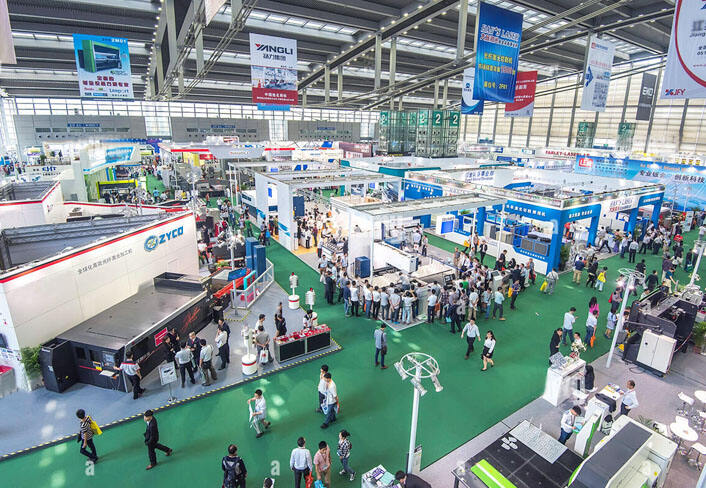Kennen Sie den Biegeradius von Blechen?
Blechbiegeradius: ein wichtiger Parameter beim Blechbiegen.
Das Biegen von Blechen ist ein gängiger Bearbeitungsprozess in der verarbeitenden Industrie. Es übt Kraft auf das Metallblech aus, um es entlang einer vorgegebenen Biegelinie in die gewünschte Form zu bringen. Beim Blechbiegeprozess ist der Biegeradius ein entscheidender Parameter und seine richtige Auswahl und Kontrolle sind entscheidend für das Aussehen, die Festigkeit und die Funktionalität des Produkts. In diesem Artikel werden die Definition und die Einflussfaktoren des Blechbiegeradius erörtert.

Definition des Biegeradius
Der Biegeradius bezieht sich auf den Biegeradius, den das Blech während des Biegevorgangs bildet. Dabei handelt es sich um den Abstand von der Innenseite zur Außenseite der Biegelinie, üblicherweise ausgedrückt in Millimetern oder Zoll. Die Größe des Biegeradius hat direkten Einfluss auf den Biegewinkel nach dem Biegen und den Verformungsgrad des Biegebereichs.


Faktoren, die den Biegeradius beeinflussen
1. Materialeigenschaften: Verschiedene Arten von Metallmaterialien weisen unterschiedliche Plastizität und Festigkeit auf, was sich auf ihre Verformungsfähigkeit und ihren minimalen Biegeradius während des Biegevorgangs auswirkt.
2. Plattendicke: Je dicker die Platte, desto größer ist der erforderliche Mindestbiegeradius, um übermäßige Spannungen und Risse zu vermeiden.
3. Biegeverfahren: Verschiedene Biegeverfahren wie Luftbiegen, mechanisches Biegen und hydraulisches Biegen stellen unterschiedliche Anforderungen und Einschränkungen an den Biegeradius.
4. Designanforderungen: Die Designanforderungen und Funktionsanforderungen des Produkts stellen auch Anforderungen an den Biegeradius dar, wie z. B. Anforderungen an das Aussehen, die strukturelle Festigkeit usw.
5. Form: Die beim Biegen gewählte Form wirkt sich auch direkt auf die Größe des Blechbiegeradius aus. Je größer die Matrizenkerbe ist, desto größer ist der Radius.
Anwendung des Biegeradius
1. Technische Bewertung: Während der Produktdesignphase ist für bestimmte Blechteile eine technische Bewertung des Biegeradius erforderlich, um den optimalen Biegeradiusbereich zu bestimmen, um Designanforderungen zu erfüllen und die Produktqualität sicherzustellen.
2. Prozesskontrolle: Während des Blechbiegeprozesses kann eine angemessene Kontrolle des Biegeradius übermäßige Spannungen, Risse oder Verformungen des Materials vermeiden und die Verarbeitungsgenauigkeit und Konsistenz des Produkts verbessern.
3. Qualitätssicherung: Die Auswahl und Kontrolle des Biegeradius hat einen wichtigen Einfluss auf die Aussehensqualität, Maßhaltigkeit und Festigkeitsleistung des Produkts. Ein angemessener Biegeradius kann Produktverformungen und Defekte reduzieren.
abschließend:
Der Blechbiegeradius ist ein wichtiger Parameter in der Fertigungsindustrie, der sich direkt auf die Qualität und Leistung des Produkts auswirkt. Durch die richtige Auswahl und Steuerung des Biegeradius können die Erscheinungsbildqualität, die Maßhaltigkeit und die Festigkeitsleistung des Produkts sichergestellt und die Fertigungseffizienz sowie die Wettbewerbsfähigkeit des Produkts verbessert werden. In der zukünftigen Produktionspraxis sollten wir weiterhin auf die Optimierungsmethode des Blechbiegeradius achten und diese eingehend erforschen, um den sich entwickelnden Fertigungsanforderungen gerecht zu werden.
Empfohlene Produkte
Hot News
-
Saudi-Arabien-WC67K 100T 3200 NC Abkantpresse & QC12K-4x3200 Schermaschine & 3x3100 Falzmaschine
2024-11-11
-
USA-PANEL 1400PA3-DA BIEGEZENTRUM
2024-10-28
-
Argentinien-WC67K 125T 3200 CNC-Abkantpresse und QC12K-4X3200-Schermaschine
2024-10-25
-
Hauptanwendungen und Entwicklung von Biegezentren
2024-10-24
-
Indonesien-WC67K-30T 1600/63T 2500/100T3200/160T 3200 CNC-Abkantpresse
2024-10-21
-
So gehen Sie mit dem Druckmangel in der Abkantpresse um
2024-10-15
-
So warten Sie eine Abkantpresse: 28 Tipps, um die Abkantpresse in perfektem Zustand zu halten
2024-10-04
-
Mexiko WC67K 80T 3200 NC Abkantpresse & QC12k-6×3200 Schermaschine
2024-09-26
-
Umfassender Leitfaden zur Biegeformung
2024-09-26
-
Wir heißen indische Kunden herzlich willkommen, unsere Fabrik zu besuchen
2024-09-23












 EN
EN
 HR
HR
 CS
CS
 DA
DA
 NL
NL
 FI
FI
 FR
FR
 DE
DE
 EL
EL
 HI
HI
 IT
IT
 KO
KO
 NO
NO
 PL
PL
 PT
PT
 RO
RO
 RU
RU
 ES
ES
 SV
SV
 TL
TL
 ID
ID
 SR
SR
 SK
SK
 VI
VI
 HU
HU
 TH
TH
 TR
TR
 AF
AF
 BE
BE
 HY
HY
 KA
KA
 UR
UR
 BN
BN
 MN
MN
 KK
KK
 SU
SU
 TG
TG
 UZ
UZ
 KU
KU
 KY
KY





